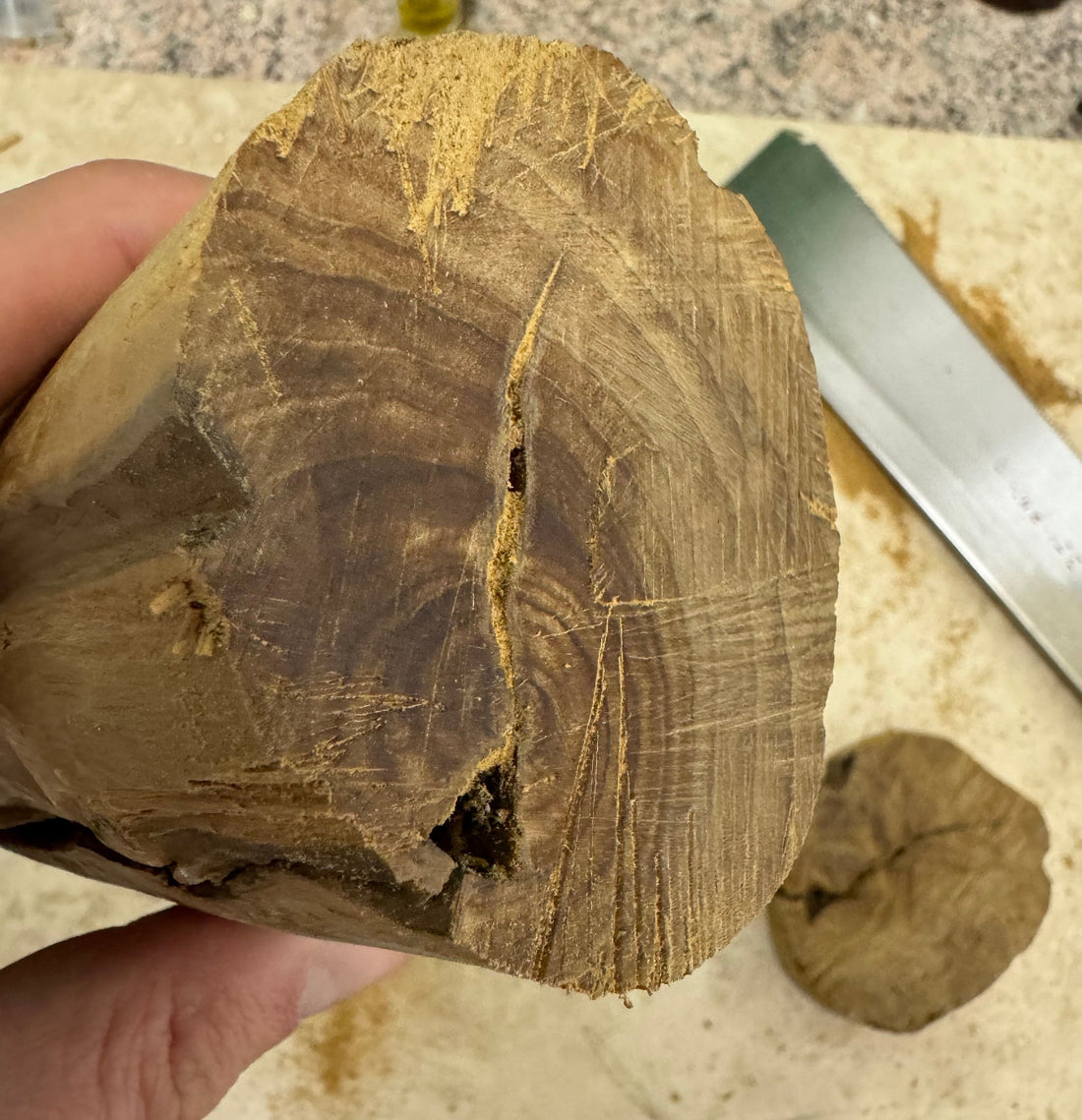What is the best sandalwood you can get? To answer this question we need to know a little about what makes a great sandalwood great.
Age of the tree:
The age of the sandalwood material is very important. Generally any sandalwood tree can be felled and its heartwood used for incense at around 30 years old. 60 years old is the bear minimum for making sandalwood oil. It will create a nice smell but the older a tree gets, the stronger the scent and the more subtle nuances will be made apparent to the user. This is true when hearing chips or making oil. The older the tree, the better the scent. It gets a little less obvious exactly how old some trees are so the bar of good material to consider for burning chips would be at least 100 years

Oil content (sinking / non sinking):
The older a tree gets the more oil will be present within the heartwood, more oil = more scent. A great indication of whether a sandalwood log / chip has high oil content is whether it sinks in water. This is a test we always carry out with our new stock and an easy test you can make as a consumer. Don’t worry, a brief dip in water is absolutely fine for the material as long as you towel dry it after the test and leave in the sun for a short while to dry out.

Colour:
An excellent indicator of high quality sandalwood is the colour. Generally speaking, darker wood is better. You will notice that young wood will be a lighter shade of yellow, 60 year old stock will be slightly darker, + 100 year old stock will be darker still with the potential of being red or black meat. We need to be careful here because there are some ‘vintage grade’ that may not be very dark and yet it is regarded equal too if not better than normal old stock black meat.

Region:
There’s a line of thought out in the wild that indian sandalwood, specifically Mysore is the best. It’s certainly the most famous and for good reason but here’s the thing. Mysore was made famous by its old wood. Now all Mysore is heavily regulated by the government and pretty much all fresh Mysore stock is only around 60 years old. True old stock vintage Mysore is still around but not all is genuine! Mysore wood has a specific beautiful and creamy character that is indeed very good but I would argue that it being the BEST sandalwood is down to personal preference. Sandalwood (Santanol Album) grows across many regions of Asia. Indonesia has a wide spectrum of aroma profiles to discover and Sri Lanka is a very well regarded region among many others!
Natural anomalies:
In some rare circumstances that even the locals don’t understand the whys and where for’s of, a tree can create a special scent. This aroma can be an exaggerated version of the local scent but sometimes the aroma doesn’t even have any connection to the local region. We call this ‘Vintage Grade’. These natural anomalies only occur with old trees and usually a small area of this tree would be deemed vintage grade. These batches are usually very small (under 100g) but sometimes larger.
Curation:
How long has your sandalwood been stored? It is good practice for sandalwood logs to be cured for at least 3 years before sale but this doesn’t always happen! The wood needs this time to expel water which will make the scent better and decrease the material weight which is better value for the consumer. I side note is that when material is sat dry for a very long time (many decades) a new musty scent will emerge. Case in point is our ‘Very Old Mysore’.

I hope this has answered any questions you may have had in relation to assessment of sandalwood material. Kind thanks for reaching the end of my blog. Welcome to Guru Aromatix. We hold the largest selection of top grade sandalwood available on the internet! Please go check out the current sandalwood selection in our shop.
